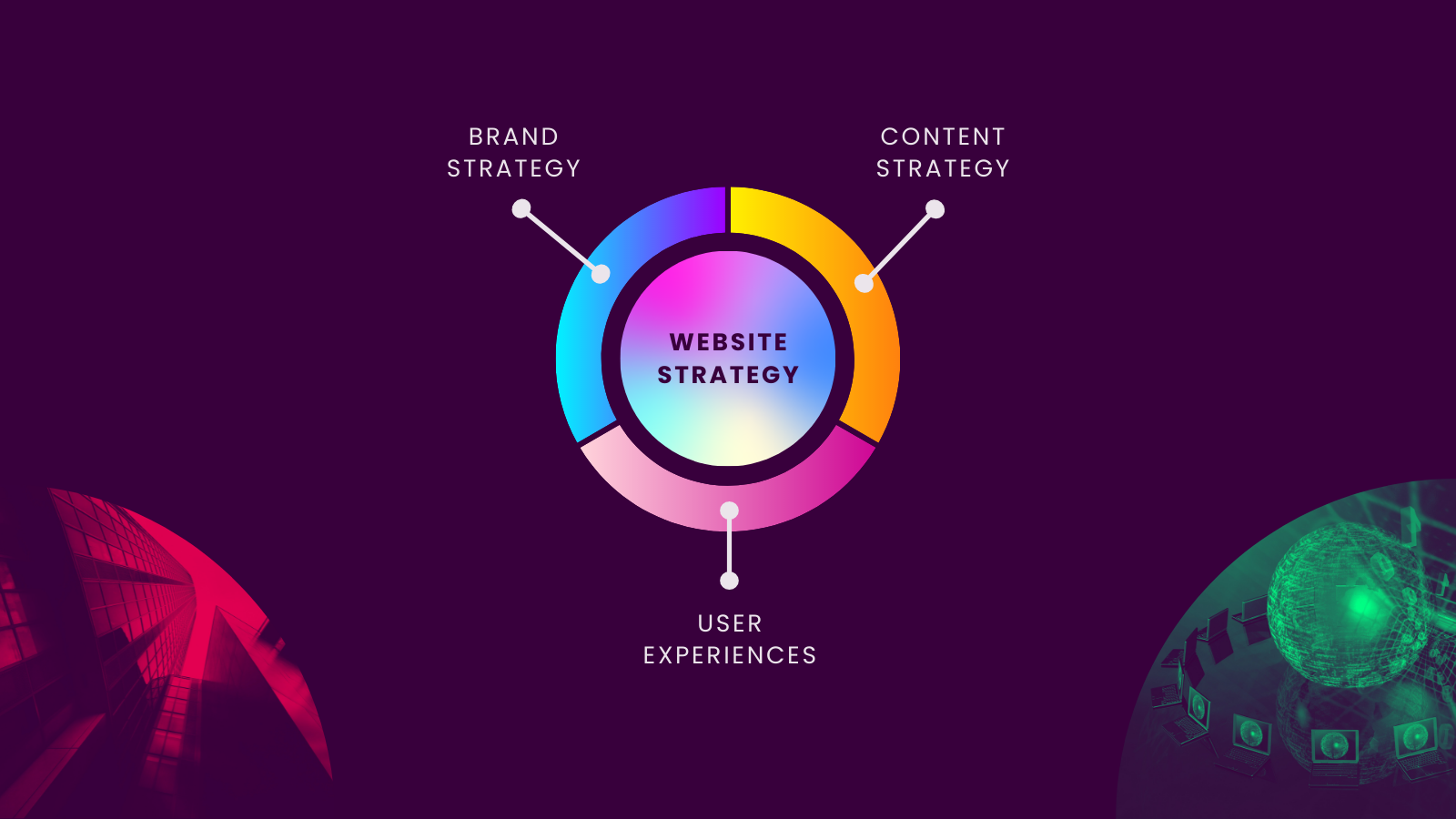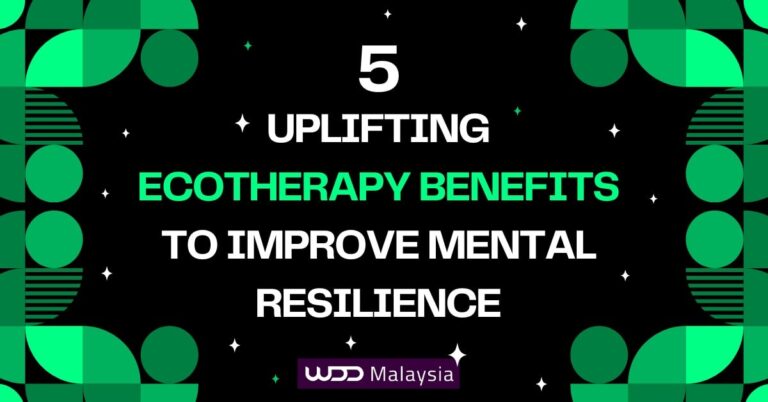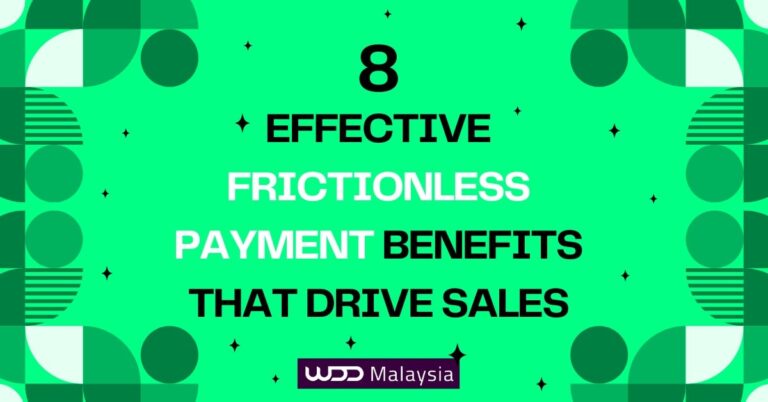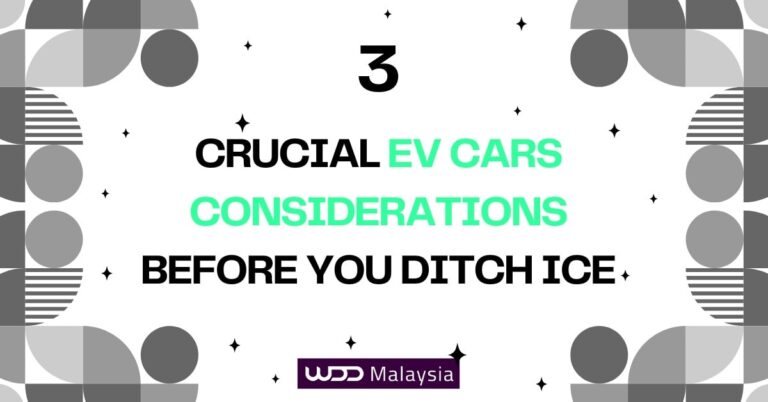Recently, the ubiquity of mobile devices requires websites to be more responsive. In addition, users increasingly prioritize privacy and information security when accessing websites. Today’s web designers and developers need to adapt to new trends that visitors find post-Covid-19.
Below we will highlight four key BEST website design strategy in 2024 and how you can implement them. Before diving into the detailed analysis, let’s find out why the web design process is essential to a company.

Why web design is important
Every business desires a modern, beautiful, and up-to-date web design. As users can reach millions of websites in the same industry as your business, web design plays an essential role in making your brand stand out and look different.
Firstly, a Website is the first channel of businesses when approaching the target audience. The website is the company’s online non-tangible asset, reflecting the credibility of the business through online visibility. Therefore, you need to present your business website professionally.
Secondly, in many cases, the website needs a simple design, easy to use and all information about products or services should deliver in the best user experience possible. Remember that Google’s algorithm is set up to rank web pages based on many criteria, including user experience. Creating a great user experience involves optimizing your website design for usability (form and aesthetics) and ease of use (site stacks).
Thirdly, a well-designed website will help build trust and entice website visitors to take action (buying, texting/calling for advice, etc.)
The 4 BEST website design strategy
1. Bespoke branding
Bespoke refers to a product or service designed specifically for your company or brand. The web designer’s task is to build a brand with a distinct identity that is consistent across all of the brand’s other points of customer connection. A brand’s consistency is crucial, from the website to the colours, logos, and branding. Similarly to branding, everything you say about your company must be consistent. The brand’s online image must be actively and attractively promoted on significant Internet sites. Bespoke will assist firms in raising brand awareness, enabling marketing initiatives, and improving sales effectiveness.
Storytelling
The brand associated with an exciting story will bring curiosity and attraction, spreading vigorously in the community. Think and find a way to tell your own story, creating connections with user intent, and enticing users.
Of course, this story also needs to be consistent with the message the brand is sharing. Stories help reinforce the values that brands bring to society and customers in particular—for example, brand origin, start-up process, product value, etc.
Easily Searchable
Most importantly, your website needs to be easily searchable on search engines. It would be best if you didn’t drown your user expectations in chaotic colours, unfocused images, and duplicate content.
First, make your website simple by keeping it clean and straightforward with relevant, brand-related content.
Second, build an intuitive catalogue system to help customers easily interact and choose the right product/ relevant content. Organize categories and display instructions logically. Your website should show the critical content in the center and on top.
Third, don’t overlook SEO techniques and search terms for achieving high rankings on search engine results pages (SERP). The most straightforward method is to employ the target keyword across the website. The search engines will return relevant keyword search results and connect you with interested people. The more relevant your writing content is to what users are looking for, the more organic traffic on-page you will receive from website visitors.
Let’s learn some methods of website optimization for search engines below:
Responsive site design:
We also have to adapt the web design standard by Google in order to achieve a better SERP ranking. Learn more about the policies and guidelines that are publicly available from Google.
Responsive design also requires a mobile-friendly set-up, a suitable size for multi-screen without affecting user experiences.
If your web is not responsive, it can lead to a decrease in traffic and revenue of the business.
Relevant header Tags (H1):
The title of a page or post on a website is called a header tag (H1). In Header Tags, search engines will look for keywords or search queries.
The SEO optimizer’s goal is to ensure that the most relevant and vital information is included in the article’s headline.
The title should contain concise and valuable information, not just a string of keywords to improve on-page SEO performance.
Meta descriptions and appropriate title tags:
The title tag and meta description on a page assist search engines in better understanding and indexing the material on the page.
These two assets will appear below the Header on the search engine results page.
URL with a short description:
You should pick a concise, meaningful URL that frequently contains brand-related terms.
Include internal connections from high-quality sites that are relevant:
If you have links to relevant pages with a high search presence, there’s a reasonable probability you’ll get more traffic from the search results as a result of these links.
2. Elegant
Elegant aims to stand out from the competition and stand out in your market. People who visit your website will only spend a short attention span. Your job is to capture attention in the first 3-5 seconds and entice customers to stay and explore the site.
Visuals
Readers will rapidly quit your site if you don’t use good presentation tactics due to their short attention spans and the likelihood of losing interest in text-heavy information.
Using appealing graphics is a tried-and-true strategy that never gets old. You can utilize short films or photos on the page to explain what your firm has to offer instead of asking customers to read a long blog post like infinite walls.
Websites with many visual cues like images, videos, and graphics that convey entertaining and engaging company tales can help customers absorb the material quickly and enhance sales conversion rates.
Close-up product videos or photographs of high quality assist customers in comprehending what the product performs and what the user may expect from it.
The modern website design should feature safe, clean, and bold typography – a mainstay of minimalist design.
Appropriately sized text, usually larger than 16px
Black/grey typeface, matching background colour or image
Web standard font
Proper spacing between lines for readability
Most organizations use a particular font or typeface on all visual elements as part of their brand identity.
Personalized user experience
The fact that a brand has a web design that attracts many viewers is often an indicator of the web design effectiveness that companies assign to the design department.
However, we believe it’s the ability to deliver the best-personalized experience that differentiates the site and provides massive viewership with effective sales conversion rates.
Personalizing the customer experience on the website is a more advanced technique than conventional digital marketing methods. The website needs to have a real connection and interaction with customers. The site offers unique content and experience recommendations tailored to their needs and drives action for each customer.
With so many factors to consider on a visual hierarchy, personalizing the shopper experience in a web design strategy can be daunting for some businesses. However, you need to understand that experience personalization is baked into your web design approach, from delivering tailored, behaviour-based product recommendations into the design infrastructure—to your work in dynamic, hyper-relevant CTAs on each new site visit. Offering customized photos and interactive features that appeal to specific goals can also be a great way to optimize your designs for personalization.
Many customers now expect and demand a good experience in each new visit. Nowadays, personalization has become an integral part of any web design.
Today, most professional websites have the feature to track browsing history and know the user’s location. Modern web designs will encourage clients to allow historical data access and display content based on user behaviour. We will have a different and appropriate approach and marketing for each customer.
Personalized content optimization will make customers want to return to your website repeatedly, increasing sales conversion rates. Continuously displaying products related to the products customers have recently viewed and liked will encourage customers to make a shopping decision or buy other related products.
3. Simplicity
An effective web design must fulfil the task of conveying the brand’s specific message and attracting customers to visit. Simple website functions and easy use will contribute to a good web design.
Search Bar
In addition to menu navigation, strongly consider placing a search bar at the top of your pages so that users can browse your site for content by keyword research. If incorporating this functionality, make sure your search results are relevant, phrases searchers, forgiving of typos, and capable of approximate keyword matching.
CTA’s. – CALL TO ACTION
Customers are encouraged to purchase your items, subscribe to your newsletter, or schedule an appointment using your calls-to-action (CTAs).
Clear Message: The messaging must entice users and establish the tone for the call to action (CTA).
A large, colourful CTA message in a prominent location: Make sure users can sign up for your site by entering their email address or phone number.
Always utilize a strong CTA message to compel your users to take action!
4. Tested
If your site has been built via professional web designers and developers, you should be tested with the correct target audiences before launching. There are some notes you should check:
Optimize each page for mobile users
Mobile optimization has recently been reviewed as the most significant web design feature. If your design company doesn’t build a good and responsive mobile-friendliness website, you need to consider the additional choice. Businesses cannot miss the opportunity to reach customers and generate repeat visits on mobile sites.
Along with the popularity of smartphones globally, more and more consumers use mobile to search and research products and services on the web. A recent survey found that nearly 80% of customers are likely to return to a helpful website or share it with friends if it is mobile-friendly.
If your website doesn’t have a mobile-friendly design, potential customers may quickly leave your site and go to other pages with a more favourable experience. As more and more brands use the mobile environment to reach customers, you need to stand out in a market full of tough competitors to capture your customers’ attention.
The ability to navigate and layout websites suitable for mobile devices when designing a web is a matter of top priority. You need to test each element on a mobile device like logos, posts, images, social media icons, call-to-action buttons, etc. Ensure that every visual cue of the website and every aspect of the design process is mobile-friendly and provides a satisfying customer experience.
Maximize your load times
A slow website is the most taboo for businesses. Visitors will quickly switch to other websites to find what they need.
Website loading speed is an essential factor in a site’s performance. The quick/slow speed will be the first impression you give to customers. It also affects the sales conversion rate.
It would be best to understand the website loading condition and prepare the optimization strategy to improve page speed in web design. Pages load speed is the top priority category when building a website.
There are many methods to improve the speed faster. We refer to some simple techniques below:
Resize displayed images: Images and graphics on websites often take a lot of memory space and lower loading times. You can compress and optimize images and reduce file size to save time.
Manage website plugins: Plugins, especially on WordPress sites, often significantly impact the overall speed of a website. You can consider removing plugins to improve site speed quickly.
Search Engines Optimization strategy
All of the aspects mentioned earlier, such as sound design, user-friendliness, outstanding user experience, fast page loading time, and so on, are critical for web design. However, none of this matters if customers can’t locate your website.
As a result, appearing on search pages online is a condition for you to reach clients and come to them as soon as they search. The focus of firms’ marketing efforts and web design strategies is shifting to search engine optimization (SEO).
SEO content authoring leads to a business’s high conversion rate and dream interaction rate and keeps the brand at the top of search engine results pages.
Keep the following considerations in mind when conducting website testing:
To boost a website’s exposure, a web designer must be well-versed in SEO guidelines (both on-page and off-page). Creating headlines, title tags, meta tags, image captions, subheadings, alt text, and even URL design, for example, directly improves a site’s ranking signals and prospective search inquiries.
The active placement of interactive components in content and page layout and designing a web that breaks down material can be valuable ways to maximize search readiness in the first place.
On-page SEO and off-page SEO are two terms you’ll hear a lot regarding SEO ranking criteria.
On-page SEO refers to parts of your website that you may optimize, such as the underlying code and content.
Off-page SEO refers to activities that take place outside of your website to develop relevant internal links and social signals that influence the credibility and authority of your site.
A/B web pages testing
A/B testing compares different versions of a website to see which works best for a given goal.
You can do the following:
Evaluate the effectiveness of web design based on CTA
Compare Landing pages, first page, page’s title tag, page’s content, alternate text (alt-text)
Compare the effectiveness of images and visual content; Check if any video player media error
What content attracts positive customer feedback
Which call-to-action message gets the most customer clicks on the signup form?
Check domain authority: Low domain authority also creates limited traffic.
Compare SEO efforts: on-page SEO strategy, search intent adaptability
Which version has a more responsive design
Conclusion
In a broad sense, Customers appear to utilize the internet to search and surf the web for everything from buying and selling basic things to complex financial operations, with everything being previewed and transacted online. Users increasingly demand an ideal, seamless, high-speed online experience and beneficial information in today’s digitalization world.
The design of a web page plays an essential and central part in marketing and promotion efforts to provide customers with the most incredible online experience possible. As a result, a business website’s design cannot appear unprofessional and operate poorly.
An effective website design certainly brings good visual, user-friendly SEO optimization (both on-page SEO and off-page SEO) to always appear high on Google search rankings, assistive technologies, etc. The brand’s professionalism in your website will deliver surprising business results and conversions for your business.
Last but not least, choosing the BEST website design plan would work well for your business immediately. Do not hesitate to contact us web design Malaysia team for more advice!





